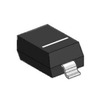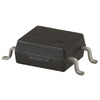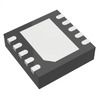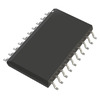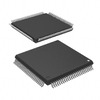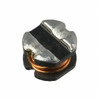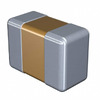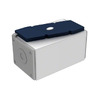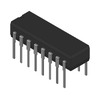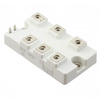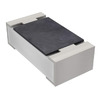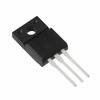Comprehensive Guide to the C945 Transistor
The C945 transistor is a cornerstone in the realm of low-power electronic components, revered for its versatile functionalities in signal amplification and electronic switching. A typical NPN bipolar junction transistor (BJT), the C945 stands out due to its robust capability in processing weak electrical signals and acting as a reliable switch in various circuit designs. This article digs into the nuanced anatomy of the C945, highlighting its structural composition and operational mechanics, which include a trio of semiconductor layers and key terminals designed for efficient current modulation. The transistor's proficiency in handling current up to 150mA and tolerating voltages up to 50V makes it a requisite tool in low-power applications, from audio signal amplification to motor control in both consumer and industrial electronics. Through the exploration of its specifications, features, and practical applications, this article aims to provide a comprehensive understanding of the C945's operational dynamics and its serious role in enhancing circuit performance and reliability.Catalog
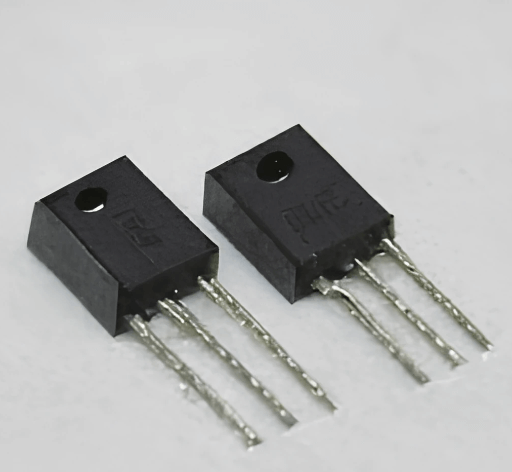
Figure 1: C945 Transistor
Understanding the C945 Transistor
The C945 transistor is a widely used, low-power NPN bipolar junction transistor (BJT) , valued for its versatility in various electronic circuits. It serves two primary purposes: amplifying weak electrical signals and functioning as an electronic switch. This dual capability makes the C945 a significant component in numerous small-scale electronic devices. The structure of the C945 consists of three semiconductor layers. In detail, there is a P-type layer positioned between two N-type layers. These layers are suitable for its function. The transistor is also equipped with three key terminals, each with a specific role:
• Emitter: Releases charge carriers (either electrons or holes) into the base
• Base: Regulates the number of carriers coming from the emitter
• Collector: Receives the carriers passed through from the emitter, which is controlled by the base
The primary function of the C945 is to control the flow of current between the base and emitter, which in turn regulates the current at the collector. By adjusting the current at the base, users can manipulate how the transistor amplifies signals or switches between on and off states. This fine control is useful in circuits that demand precise voltage and current regulation. The C945 has a current capacity of up to 150mA and can handle voltages as high as 50V, making it ideal for low-power tasks.

Figure 2: C945 Pinout
C945 Pinout Configuration
The C945 has three main pins: the collector, base, and emitter. Each pin performs a distinct and basic role, and connecting them correctly to other components is used for the transistor to work as intended.
• Collector Pin: This pin is typically connected to the positive terminal of the power supply. It collects the charge carriers (electrons or holes) that flow from the base, enabling the transistor to conduct current.
• Base Pin: The base controls the transistor. The small voltage applied to this pin determines how much current flows between the collector and emitter. It's the key to turning the transistor "on" or "off" in a circuit.
• Emitter Pin: The emitter usually connects to the ground or the negative side of the circuit. It releases the charge carriers into the base, completing the circuit and allowing current to flow.
Some variations of the C945 transistor may come with an extra pin, specifically designed for heat dissipation. This feature is noteworthy in high-power applications where the transistor might otherwise overheat, affecting its performance.
Features of the C945 Transistor
The C945 transistor is a highly regarded NPN bipolar junction transistor (BJT) due to its design, which promotes efficient electron flow. This makes it particularly well-suited for amplification and switching applications in various circuits.
|
Features of the C945 Transistor |
|
|
Low Collector-Emitter Saturation
Voltage |
One of the C945's primary strengths is
its low collector-emitter saturation voltage. This means that when the
transistor is fully "on," it minimizes the voltage drop between the
collector and emitter, reducing power loss. In practical terms, this allows
the transistor to switch quickly and efficiently, which is influential in
circuits requiring rapid on-off transitions, such as high-speed switching
devices. |
|
High Current Gain |
The C945 also features a high current
gain, which makes it ideal for amplification tasks. In essence, this gain
allows the transistor to output a larger current compared to the smaller
input current applied to the base. This is particularly valuable in audio and
radio frequency (RF) amplifiers, where maintaining signal strength without
distortion is serious. For example, in audio equipment, this high gain
enables clean amplification of low-power signals to levels that can drive
speakers effectively. |
|
Versatility in Power and Signal Handling |
The ability of the C945 to handle a
variety of power levels and signal types makes it an adaptable component in
numerous electronic devices. Some common applications include RF Amplifiers used
to boost weak radio frequency signals, and the C945 ensures that
communication devices can transmit and receive signals over long distances
without degradation in signal quality. In audio circuits, the C945 enhances
low-power signals to drive loudspeakers while maintaining clarity and
minimizing distortion, making it useful in sound systems. |
Specifications of the C945 Transistor
While specifications may vary slightly by manufacturer, the core parameters ensure the transistor operates effectively under different conditions.
|
Specifications of the C945 Transistor |
|
|
Collector-Emitter Saturation Voltage |
This voltage typically falls between 0.2V
and 0.4V, allowing the C945 to switch efficiently with minimal voltage loss.
This low saturation voltage helps reduce heat generation, which is necessary to maintain the integrity and performance of the overall circuit.
Efficient switching ensures the transistor operates smoothly in systems where
rapid on-off cycling is required. |
|
Breakdown Voltage (Collector to
Emitter) |
The breakdown voltage, usually between
50V and 100V, safeguards the transistor against voltage spikes. This feature
ensures stable performance in high-voltage circuits. By handling sudden
increases in voltage, the transistor can operate reliably without the risk of
damage or malfunction in more demanding conditions. |
|
Emitter-Base Breakdown Voltage |
This specification ranges from 5V to 10V
and indicates the maximum voltage the base-emitter junction can endure before
breaking down. From a practical point of view, this value ensures that the
transistor will not malfunction during operation. |
|
Collector Current |
The C945 can handle up to 0.2A of
collector current, making it suitable for a variety of moderate power
applications. Whether used for switching or amplifying, this current range
supports reliable performance in both low- and mid-power circuits. The ability
to manage moderate loads makes it a versatile component for everyday
electronic tasks. |
|
Power Dissipation |
The transistor's power dissipation
typically ranges between 600mW and 800mW, which defines how much heat it can
handle before requiring additional cooling measures. Effective heat management is used,
especially in applications where the transistor operates continuously or
under heavier loads. |
|
Operating Temperature Range |
The C945 can function in temperatures
ranging from -55°C to 150°C, making it suitable for both extreme cold and
heat. This wide operating range allows it to be used in outdoor environments
or devices that experience fluctuating temperatures. Its resilience in varied
thermal conditions ensures that the transistor can perform reliably in
different settings, from industrial machinery to consumer electronics. |
Applications of the C945 Transistor
The C945 transistor is widely used in both consumer and industrial electronics due to its ability to amplify signals and perform efficient switching. Its versatility makes it a basic part of numerous electronic devices, where it enhances overall circuit performance.
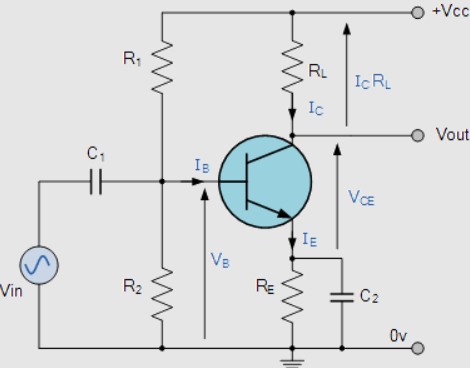
Figure 3: Audio Signal Amplification
The C945 is ideal for amplifying audio signals, thanks to its high current gain. In audio equipment, it takes weak signals and boosts them to power levels sufficient to drive loudspeakers. This amplification without distortion of the original sound is ideal for use in hi-fi systems and public address settings.

Figure 4: RF Signal Amplification
In radio frequency (RF) applications, the C945 improves the strength of RF signals, aiding in better transmission and reception in devices like radios and transceivers. By boosting these signals, it helps maintain clarity and consistency, even over long distances, ensuring reliable communication.
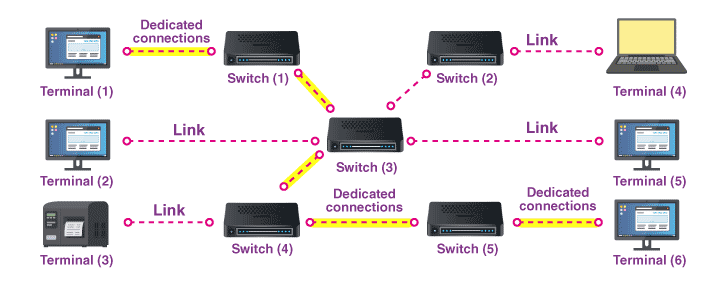
Figure 5: Switching Applications
The C945's low collector-emitter saturation voltage enables efficient and quick switching with minimal power loss. This makes it a go-to component for digital circuits where fast and reliable switching is a must. It's commonly used in computing devices, smart controllers, and other systems where rapid switching enhances functionality.

Figure 6: Motor Control
The C945 can regulate power flow in motor control applications. By adjusting the current, it allows precise control over a motor's speed and torque. This function is required in automotive electronics, robotic actuators, and machinery that rely on fine motor adjustments for smooth operation.
Equivalents to the C945 Transistor
The C945 transistor has several equivalent alternatives, including the 2N3904, BC547, and 2N2222 transistors. These alternatives share similar electrical characteristics, making them suitable for many of the same applications.
When choosing a replacement for the C945, the selection criteria is meeting key electrical specifications. These include current handling, voltage rating, and power dissipation. Only by meeting the electrical specifications can performance issues or potential circuit failures be prevented. For example, if a transistor with a lower current rating is used in an amplifier, it may overheat or fail under normal operating conditions.
The physical size and pin configuration of the replacement transistor should fit seamlessly into the existing circuit. A mismatch in size or pin layout could lead to complications during installation, possibly requiring additional modifications or adapters, which can increase the complexity of the project. Different transistors have varying levels of power dissipation. Even if a replacement matches the C945 in terms of current and voltage, differences in heat generation may require extra thermal management, such as adding a heat sink or improving airflow within the device.
C945 Transistor Packaging
The C945 transistor is typically housed in a TO-92 package, known for its compact design and efficient use of space in circuit layouts. This packaging style features a three-lead configuration, arranged in a triangular pattern, which helps streamline both assembly and integration into various electronic designs.
The small size of the TO-92 package makes it ideal for applications where space is limited. This is especially beneficial in modern electronics where minimizing board space is a key factor.
Then, the simple lead arrangement of the TO-92 package makes it easy to solder and replace components, which is especially helpful during prototyping and production. Despite its small size, the TO-92 package effectively dissipates heat generated during the transistor's operation. This thermal performance helps maintain the stability and longevity of the C945 in circuits that deal with moderate power loads. Managing heat is beneficial to prevent overheating and ensure reliable performance over time.
Dimensions of the C945 Transistor
The C945 transistor, housed in a TO-92 package, typically measures 3.9 mm in length, 3.9 mm in width, and 6.5 mm in height. While these dimensions may vary slightly depending on the manufacturer, they generally reflect a compact design that is well-suited for easy integration into a wide variety of electronic devices and circuits.
The small size of the C945 makes it ideal for applications requiring high component density, such as portable devices and multi-functional electronics. The compact footprint helps designers maximize space on printed circuit boards (PCBs) or breadboards, allowing for more intricate and space-efficient layouts without sacrificing performance.
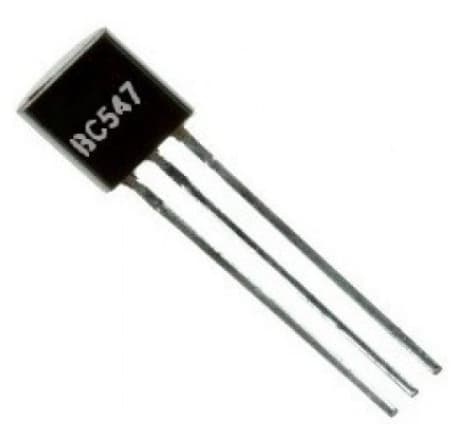
Figure 7: BC547 Transistors
Comparing C945 and BC547 Transistors
The C945 and BC547 are both NPN bipolar junction transistors (BJTs) commonly used in low-power applications. While they share similarities, each transistor has distinct electrical and physical differences that impact their performance and suitability in various circuit designs.
Current Handling
The C945 can handle higher currents than the BC547, making it more suitable for applications with larger current loads, such as in power regulation circuits or motor controls. This makes the C945 a better fit for circuits that demand robustness and stability under heavier electrical loads.
DC Gain
The BC547, on the other hand, offers a wider range of DC gain (hFE), which provides more flexibility for applications that require variable signal amplification. This broader gain range makes the BC547 particularly useful in audio pre-amplifiers or signal-processing circuits, where fine-tuning the level of amplification is dangerous for achieving the desired output.
Though both transistors use the standard three-pin layout, there are slight differences in the pin configuration between the C945 and BC547. These differences may affect how the transistor fits into a circuit, especially in compact designs or PCBs with tight spacing. When designing or modifying a circuit, it's required to verify the pin arrangement to ensure compatibility and prevent misalignment during assembly. In power-intensive circuits, the C945's higher current capacity ensures stable operation and minimizes the risk of transistor failure, making it ideal for applications that draw more power or involve heavy-duty switching.
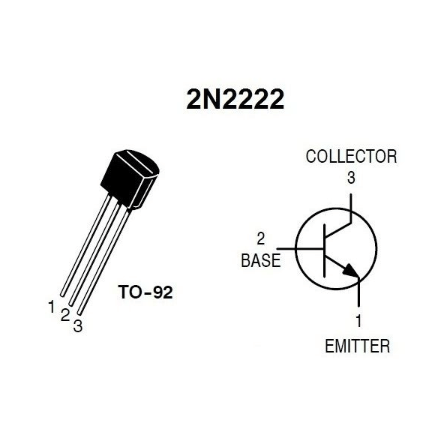
Figure 8: 2N2222 Transistor
C945 vs. 2N2222 Transistor Comparison
The C945 and 2N2222 are both widely used NPN transistors, but their specific capabilities differ, which makes choosing the right one used for certain applications. Considering these differences can help ensure that the transistor selected fits the circuit’s performance needs.
Current Handling
The 2N2222 can handle higher continuous current than the C945, making it a better fit for circuits where more electrical power is a must. For example, in power-switching circuits or higher-power amplification tasks, the 2N2222’s ability to support a stronger current flow allows the circuit to perform reliably under heavier loads.
Voltage Ratings
Both transistors manage similar voltage levels, but the 2N2222 typically has a higher voltage tolerance. This higher rating provides more flexibility in circuits that operate under higher voltages, giving extra protection against voltage spikes that could damage components.
Application Requirements
Choosing between the C945 and 2N2222 usually comes down to the specific needs of the circuit, particularly in terms of current and voltage demands. If the circuit requires handling more power, such as in motor drivers or power amplifiers, the 2N2222 is often the better choice due to its higher current capacity. On the other hand, for less power-intensive tasks, the C945 may be more than sufficient and can simplify the design process.
Thermal Management
Since the 2N2222 can handle more current, it can generate more heat. When installing or testing circuits with the 2N2222, careful attention must be paid to thermal management. In tightly packed circuits or those with limited airflow, extra cooling measures, like heat sinks or improved ventilation, might be required to prevent overheating, which can reduce the transistor's lifespan.
Conclusion
The multifaceted characteristics and applications of the C945 transistor, it clear that this component is not just a staple in electronic circuitry but a major element that enhances the functionality and efficiency of modern electronic devices. Its ability to efficiently switch and amplify signals makes it a preferred choice for a wide range of applications, from audio systems to complex digital circuits. The low collector-emitter saturation voltage, high current gain, and versatile power handling capabilities underscore its utility in delivering precise performance while maintaining energy efficiency. In addition, the exploration of its equivalents and comparisons with other transistors like the BC547 and 2N2222 provides valuable insights into selecting the appropriate transistor based on specific circuit requirements, ensuring optimal performance and reliability. Ultimately, the C945's enduring relevance in electronics underscores its adaptability and the ongoing innovation in transistor technology, which continues to evolve to meet the demands of increasingly sophisticated electronic systems.
Frequently Asked Questions [FAQ]
1. What is the equivalent of the C945 transistor?
The 2N5551 transistor serves as a functional equivalent to the C945. Both share similar characteristics in terms of voltage, current, and application suitability.
2. What is a C945 transistor datasheet?
A datasheet for the C945 transistor provides detailed specifications like maximum voltages, current ratings, gain values, and package type.
3. Is C945 an NPN or PNP transistor?
The C945 is an NPN transistor, commonly used for amplification and switching applications due to its ability to efficiently conduct between collector and emitter when a small current is applied to the base.
4. What is the difference between 2N2222 and C945?
While both are NPN transistors and share some common uses, the 2N2222 generally supports higher current and power handling capabilities compared to the C945. It also features a higher maximum collector current and collector-emitter voltage, making it more suited for higher power applications.
5. What is the advantage of 2N2222?
The primary advantage of the 2N2222 transistor lies in its robustness for handling higher power applications. It's capable of supporting higher voltages and currents, making it ideal for use in commercial and military-grade equipment where reliability under stress is insistent.
About us
ALLELCO LIMITED
Read more
Quick inquiry
Please send an inquiry, we will respond immediately.

330 Ohm Resistor and Color Codes
on September 13th
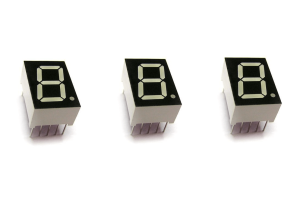
MAN6760 Display Modules: Features, Equivalent, and Applications
on September 12th
Popular Posts
-

What is GND in the circuit?
on January 1th 3033
-

RJ-45 Connector Guide: RJ-45 Connector Color Codes, Wiring Schemes, R-J45 Applications, RJ-45 Datasheets
on January 1th 2604
-

Fiber Connector Types: SC Vs LC And LC Vs MTP
on January 1th 2160
-

Understanding Power Supply Voltages in Electronics VCC, VDD, VEE, VSS, and GND
on November 13th 2053
-

Comparison Between DB9 and RS232
on January 1th 1786
-

What Is An LR44 Battery?
Electricity, that ubiquitous force, quietly permeates every aspect of our daily lives, from trivial gadgets to life-threatening medical equipment, it plays a silent role. However, truly grasping this energy, especially how to store and efficiently output it, is no easy task. It is against this background that this article will focus on a type of coin cell battery that may seem insignificant on the...on January 1th 1752
-

Understanding the Fundamentals:Inductance Resistance, andCapacitance
In the intricate dance of electrical engineering, a trio of fundamental elements takes center stage: inductance, resistance, and capacitance. Each bears unique traits that dictate the dynamic rhythms of electronic circuits. Here, we embark on a journey to decipher the complexities of these components, to uncover their distinct roles and practical uses within the vast electrical orchestra. Inductan...on January 1th 1704
-

CR2430 Battery Comprehensive Guide: Specifications, Applications and Comparison to CR2032 Batteries
What is CR2430 battery ?Benefits of CR2430 BatteriesNormCR2430 Battery ApplicationsCR2430 EquivalentCR2430 VS CR2032Battery CR2430 SizeWhat to look for when buying the CR2430 and equivalentsData Sheet PDFFrequently Asked Questions Batteries are the heart of small electronic devices. Among the many types available, coin cells play a crucial role, commonly found in calculators, remote controls, and ...on January 1th 1640
-

What Is RF and Why Do We Use It?
Radio Frequency (RF) technology is a key part of modern wireless communication, enabling data transmission over long distances without physical connections. This article delves into the basics of RF, explaining how electromagnetic radiation (EMR) makes RF communication possible. We will explore the principles of EMR, the creation and control of RF signals, and their wide-ranging uses. The article ...on January 1th 1617
-

Comprehensive guide to hFE in transistors
Transistors are crucial components in modern electronic devices, enabling signal amplification and control. This article delves into the knowledge surrounding hFE, including how to select a transistor's hFE value, how to find hFE, and the gain of different types of transistors. Through our exploration of hFE, we gain a deeper understanding of how transistors work and their role in electronic circu...on November 13th 1561





